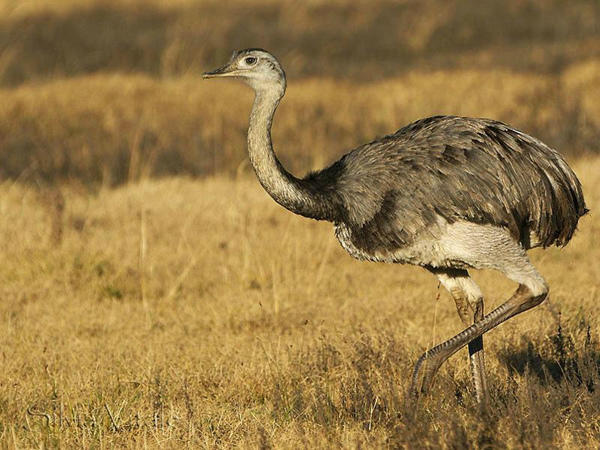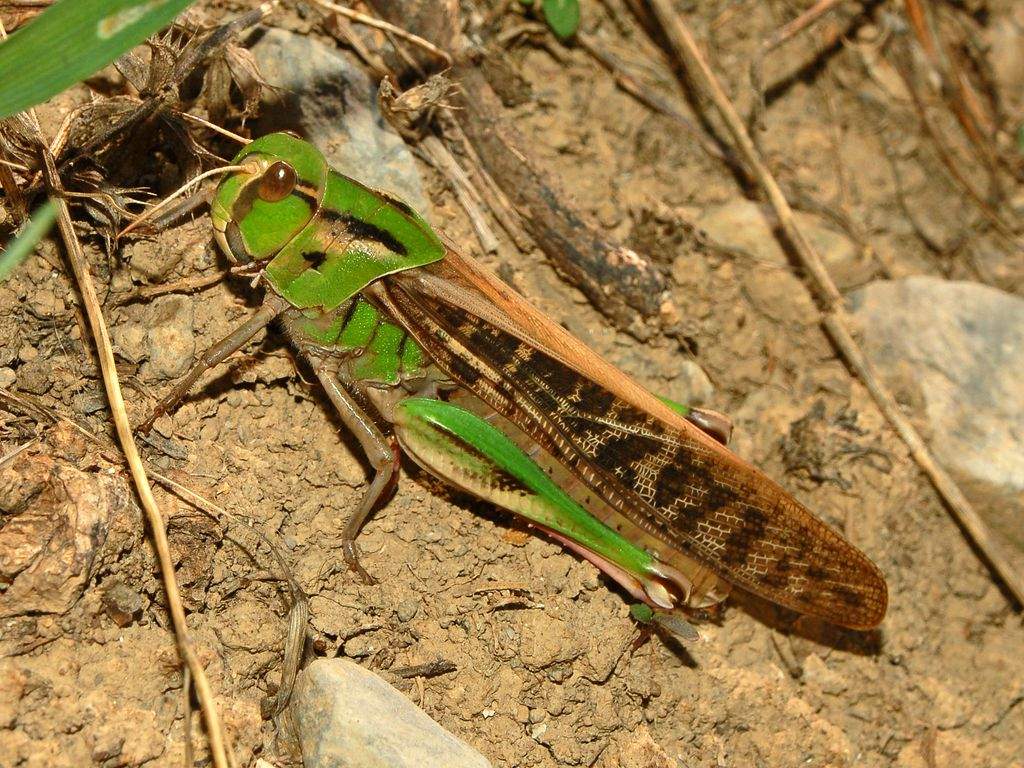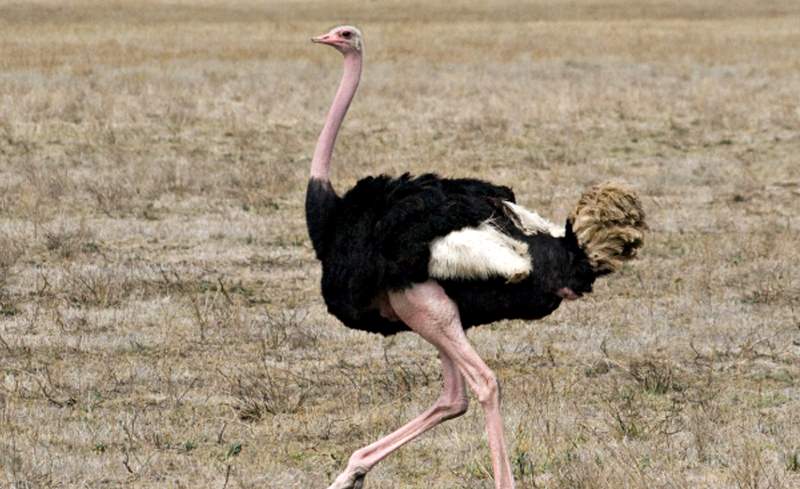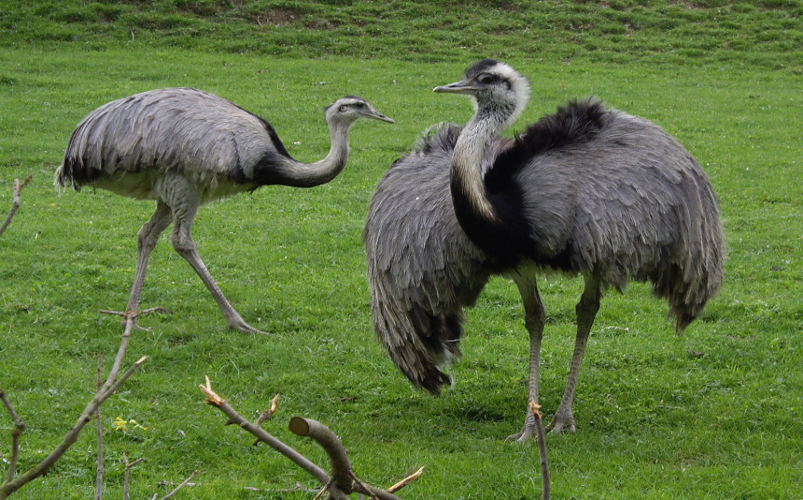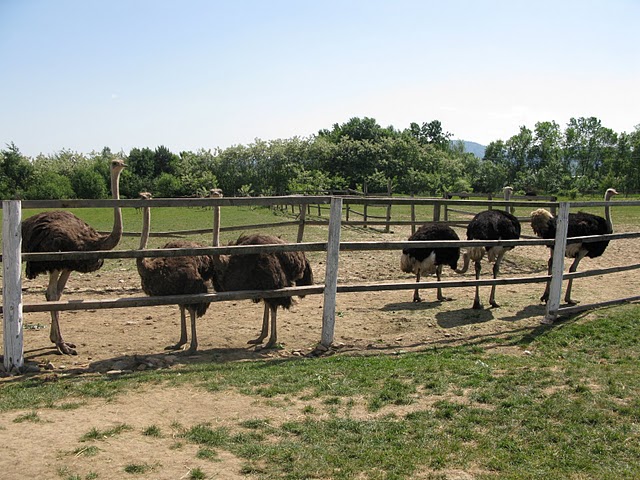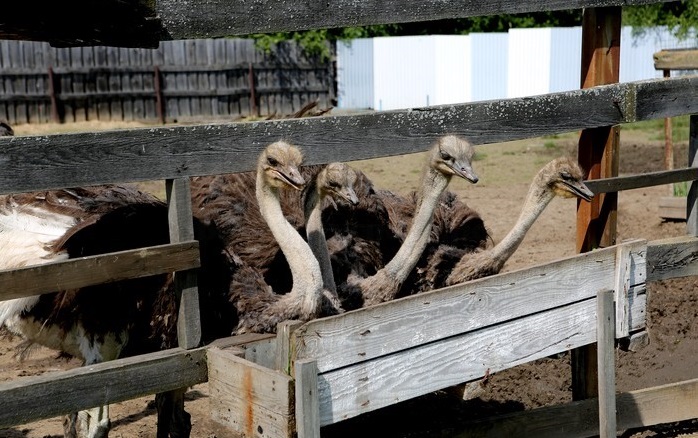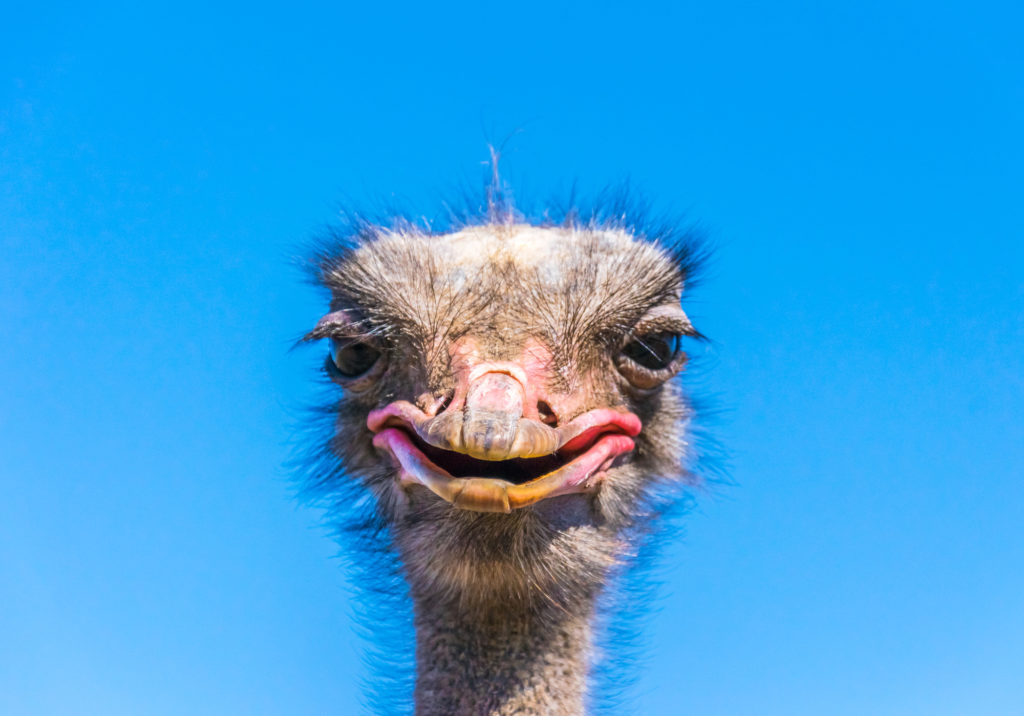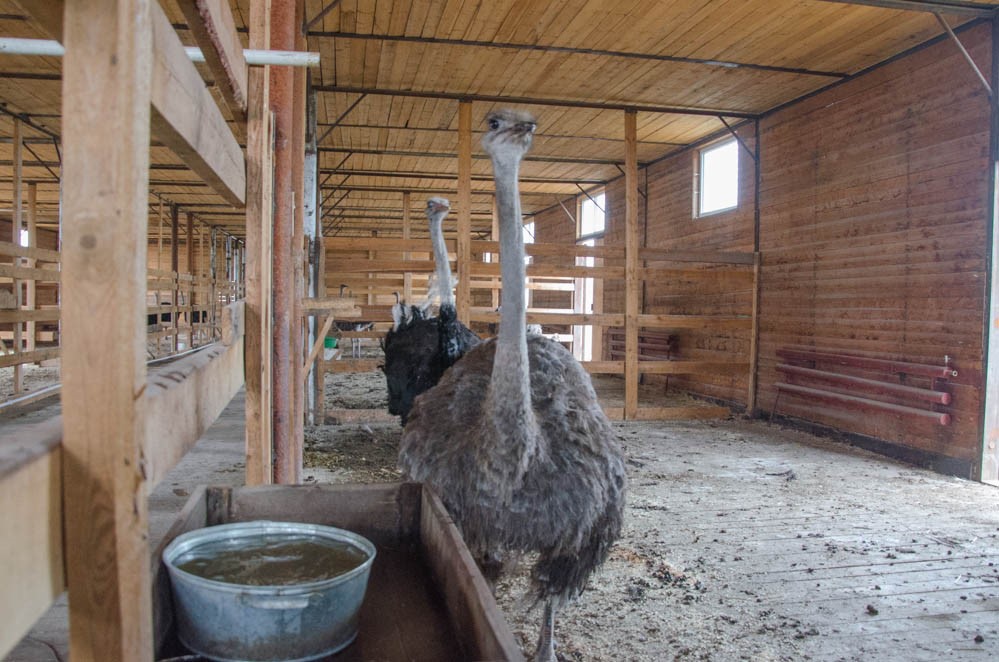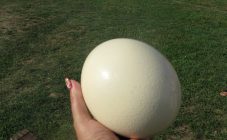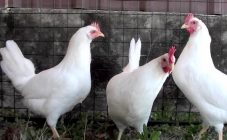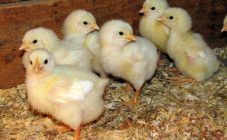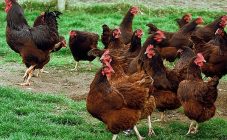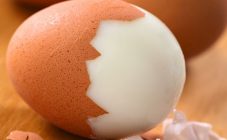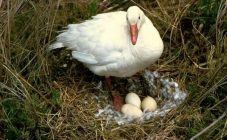Content:
Ostriches are conventionally divided into 3 groups. Representatives of the Australian mainland are emu. African ostriches are found on the black continent. In America, you can find the South American, or American ostrich, which is known as the rhea.
Features of rhea
The American ostrich is a flightless bird that belongs to the Rheidae family. Belongs to the order Rheiformes, or rhea. The ostrich rhea predominantly lives in the savannas and highlands of South America.
Habitat areola:
- Paraguay and Bolivia;
- Uruguay and Chile;
- Brazil and Argentina.
The rhea is also found in the southern regions of Peru.
It is a large ratite bird. The body is elongated, slightly elongated, rounded in adult birds. The neck is long and thickened, the head is small, the paws are large. It is inferior in size to African counterparts.
In the diet of an ostrich from Chile, everything that comes along the way.
Omnivorous birds do not give up:
- frogs and insects;
- tree roots and seeds;
- fruits and rodents;
- broadleaf plants and fish;
- meadow grasses.
They do not disdain from carrion and excrement of mammals. When life is threatened, they easily cope with a snake. For a long time they are satisfied with the water contained in the food. Therefore, they drink it occasionally.
Locusts are the ostrich's favorite delicacy. When overeating, birds are unable to run.
Rhea regularly swallow gastroliths (small stones), which are necessary to normalize digestion processes.
The South American ostrich does not fly, but it runs well.
In appearance it is similar to the African ostrich, but differs significantly from it:
- smaller dimensions;
- body weight;
- the presence of 3 fingers;
- feathered neck.
Distinctive features of nandu:
- weighs about 40 kg, grows up to 150 cm;
- runs with a raised wing, keeps balance;
- accelerates to 60 km / h;
- when threatened, it releases sharp claws that are on the wings and fingers;
- ostrich paws are covered with down;
- prefers a settlement near water bodies, swims well;
- the origin of the name is explained by the sounds made;
- hisses at impending danger;
- cat screams are present in mating games, which fall in the spring;
- hatch eggs, look after chicks.
The rhea lives in a flock of at least 5 and maximum 30 individuals. They get along with livestock: sheep and cows. He does not like intrusions into the personal territory of strangers and friends.
Chilean ostriches are characterized by an active lifestyle during the day, during the heat they rest in the shade.
The head of the flock is usually a male. Fertilizes up to a maximum of 7 females. For females, the onset of maturity is noted at 2 or 3 years, for males - a little later, 3.5 years. Empty eggs are typical of immature females. Within 36 days, males are engaged in incubating eggs, then raising offspring.
In nature, there are two types of rhea:
- ordinary, in a different way northern;
- Darwin, or southern.
The southern rhea enjoy the mountainous terrain. They can be found at an altitude of 5000 meters in the Andes. Darwin's rheas survive in adverse weather conditions at temperatures as low as -30 ° C. Optimally suited and adapted to breed them at home. Characteristic features of individuals: small growth, weight.
Breeding American ostrich at home
A good ostrich rhea breeds and lives in conditions of lack of freedom.
Ostrich farms are intended for raising birds in order to obtain:
- dietary meat;
- pen;
- skins;
- eggs.
Ostrich meat is in demand among consumers, both in Latin America and throughout the world.
Meat is irreplaceable in the diet; it tastes like beef.
Ostrich eggs are very popular, which contain many useful components and trace elements. The shell, from which souvenirs and handicrafts are produced, are appreciated. It resembles porcelain and is suitable for making picture frames and vases.
Ostrich skin is given its due, along with crocodile skin. It is used in the production of exclusive accessories, boots and handbags of famous brands. One square meter of leather is estimated at $ 350.
The beak is used to release medications. They produce a concentrated supplement for animals due to the high content of magnesium and selenium, potassium and calcium.
Raising ostriches is no longer an exotic activity for poultry farmers. A well-organized home business will bring benefits and profits. For efficiency, the chickens are hatched in an incubator, the temperature is maintained at 35 ° C. When hatching chicks, they keep the temperature in the room in the range of + 32 ... + 35 ° С. Decrease by 2-3 degrees weekly, reaching room temperature.
Ostrich chicks are picky about:
- air humidity, which is 70%;
- room illumination after birth;
- bedding: veterinarians do not recommend laying grass or straw on the floor until chicks are one month old.
For food for ostriches, feeders are suspended, where they place up to 4 kg of food. When grown at home, ostriches are fed with oats, barley, and wheat. In the winter season they feed with hay, carrots, beets, potato waste: raw and boiled peel.
The menu of young animals includes:
- animal feed;
- cottage cheese, yogurt;
- chicken eggs;
- fish.
They put clean water, which is changed twice a day.
Birds are walked every day, regardless of the season. The ideal temperature for walking in winter is up to -4 ° C. Constant care of the ostrich is not required. It is important that in the winter it is warm in the room and does not come through. The floor is laid with straw.
Desirable for a full-fledged ostrich keeping:
- poultry house with a high ceiling, insulated, illuminated, dry;
- fenced-off paddock;
- a small pond in the aviary;
- river sand for ostriches to swim.
Options for breeding rhea at home:
- Keeping parents in open enclosures or warm rooms to achieve excellent egg production. Collect eggs, transfer to an incubator. The frequency of collection determines their quickest appearance. It is ideal to fence two times daily. Females produce 40 eggs.
- Parents are kept in closed pens, but walking is carried out all year round. The female hatches and incubates eggs. Care for young animals is carried out by themselves, they are protected from predators. Individuals do not incubate more than 20 eggs in captivity.
- Mixed method. In this case, some of the eggs are placed under the ostrich. The rest will come in handy for incubation.
When preparing birds for independent egg-laying, nests are built in pits that are lined with grass. The eggs laid are sterile. However, their cooling leads to a loss of qualities. The penetration of bacteria through the shell is the reason for refusing to wash when contaminated. The yolk is located in the middle, includes dark and light layers. The saturation of the color signals an excess of vitamin A in the diet. The eggshell has a pale yellow color.
Diseases of the American ostrich rhea
Like all birds American ostrichessusceptible to infections:
- bird flu;
- fungal gastritis;
- diarrhea;
- encephalopathy;
- Newcastle disease.
They carry out preventive measures:
- the open-air cage and the room in which the ostriches are kept are cleaned daily;
- periodically carry out sanitization of buildings - places of keeping ostriches, drinkers, feeders, devices used;
- infected individuals and recently purchased birds must be kept separately;
- they certainly treat their hands when they carry out incubation work, procedures with eggs are performed only with gloves;
- conduct periodic analyzes of ostrich excrement in order to identify timely diseases and parasites;
- systematically fight rodents, which are carriers of infections;
- ostriches are constantly vaccinated;
- balanced feeding: fresh water, high quality feed;
- monitor the state of the bedding;
- equip a disinfectant barrier at the entrance to the farm, a quarantine and incubation section, a compartment for keeping young animals;
- satisfactory ventilation of the premises for keeping ostriches.
Curious facts
- The Indians were the first to tame the rhea. The American ostrich was bred for feathers to decorate clothes, eggs and meat for food. Wounds were treated with fat, which healed quickly after lubrication. American emigrants domesticated ostriches and tamed them to guard their homes. The rhea were used as dogs.
- Ostrich feathers are used in the production of fans, ornaments, for the decoration of hats. Manufacturers use them as insulation and linings for outerwear: they provide air exchange, do not cause sweating, and keep warm. Feathers are carefully trimmed 2 times annually at the very skin.
- Horseback riding and sledding on an ostrich will bring a lot of positive emotions.
- An ostrich that runs away is capable of confusing pursuers with a sudden fall. Lies on the ground with neck and limbs extended. The offenders lose sight of him. Meanwhile, the ostrich rises quickly and runs in the opposite direction.
- The stride length varies from 1.5 to 2 m.
- The birth weight of the chick is 0.5 kg. For 3 days, the individuals are not fed: there are enough nutrients (the remainder of the egg yolk), which the rhea get when they hatch.
- Argentinean farmers use ostriches to guard a grazing herd of goose or sheep.
- The first ostrich farming in Latin America dates back to 1838.
- The life expectancy of American ostriches in their natural environment is 20 years, in captivity - 15 years longer.
Growing ostriches from America at home does not require special knowledge and experience from poultry farmers. The unpretentiousness of South African ostriches in care will greatly facilitate the task.
